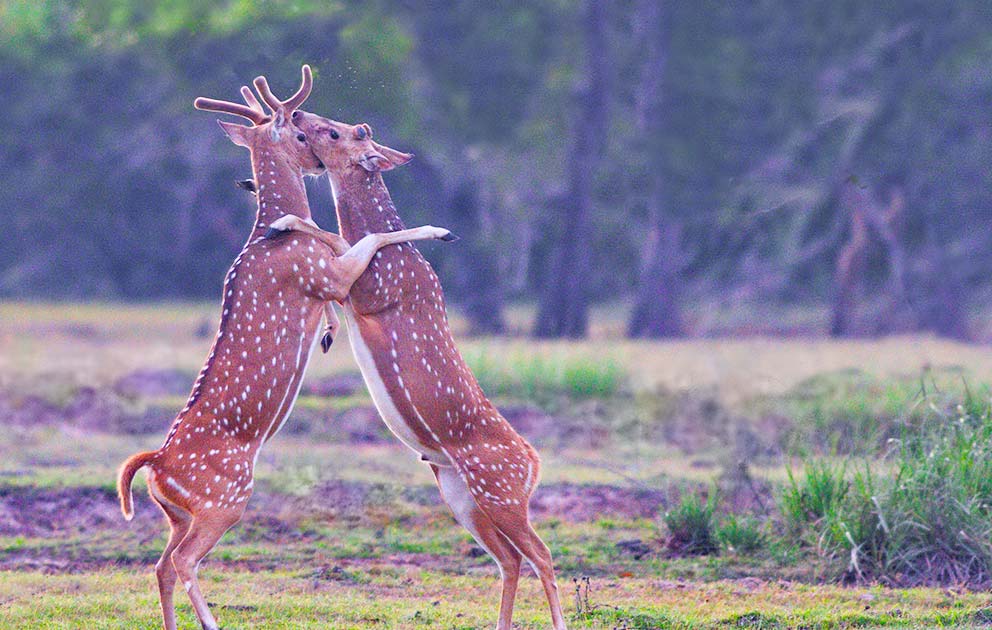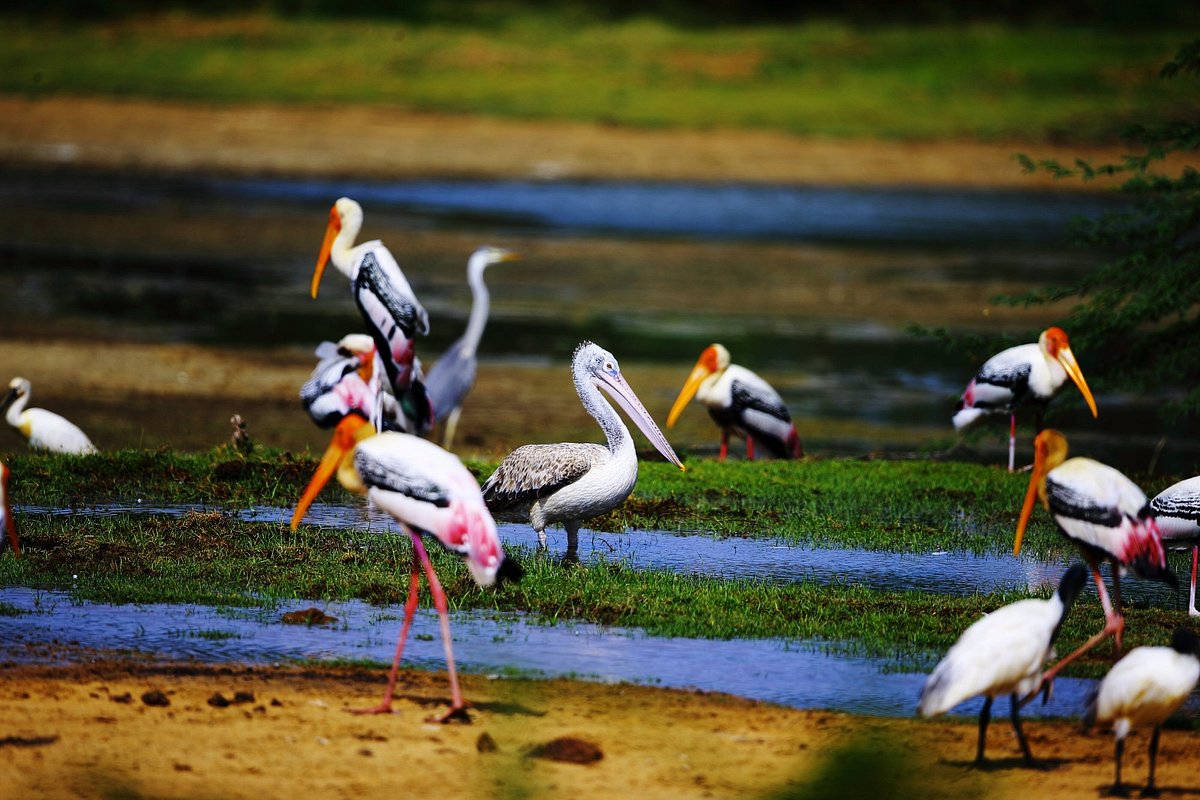Kumana National Park
Located in the southeast corner of Sri Lanka, Kumana National Park is renowned as a bird sanctuary where large flocks of migratory waterfowl and wading birds can be seen. From May to June, many water birds nest in the mangrove swamps surrounding the 200-hectare Lake Kumana Villu. The species inhabiting this area include pelicans, painted storks, spoonbills, white ibis, herons, egrets and little cormorants. Also, the very rare black-necked stork has been spotted here. Besides the abundant birdlife, Kumana is home to many mammals such as elephants and leopards.
The Kumana Bird Sanctuary, located within the boundaries of Kumana National Park, was declared a protected area in 1938, and it is rated as one of the most important breeding grounds for birds in Sri Lanka.
Climate and vegetation in Kumana
In Kumana, there are about 20 shallow lagoons and lakes that have a major contribution to the abundant birdlife. The wetland zones are surrounded by dry zone tropical thorn forests, whereas inland forests consist mainly of Manilkara hexandra, known as Palu in Sinhalese. Also a wide range of aquatic plants, trees and reeds is found in Kumana.
Birdlife in Kumana National Park
A total of 255 species of birds, including the very rare black-necked stork, have been recorded in Kumana. On a birding safari pelicans, painted storks, spoonbills, white ibis and cormorants are commonly seen, as well as pacific golden plover, greater sand plover, lesser sand plover, grey plover, ruddy turnstone, little ringed plover, wood sandpiper, marsh sandpiper, common redshank, common sandpiper, curlew sandpiper, little stint, common snipe, and pintail snipe.
The Asian openbill, glossy ibis, purple heron, great egret, Indian pond heron, black-crowned night heron, intermediate egret, little egret, spot-billed pelican, Indian cormorant, little cormorant, common moorhen, watercock, purple swamphen, white-breasted waterhen, pheasant-tailed jacana, black-winged stilt, lesser whistling duck and little grebe migrate here in large flocks. The migrant birds fly up to 9,000 kilometres from Siberia to arrive in these Southern regions of Sri Lanka. Rare migrants include yellow-footed green pigeons, greater racket-tailed drongo, Malabar trogon, red-faced malkoha, and sirkeer malkoha.
Safari at Kumana
1. Morning Safari (6.00 am-11.00 am)
2. Afternoon Safari (2.30 pm – 6.00 pm)
3. Full-day Safari (5.45 am -6.00 pm)
The safari would take place with an experienced safari driver in specially modified comfortable jeeps for a unique safari experience. The tour could be more customized for guests for their preferences (Family safari, honeymoon safari, photography safari etc.).
Tour in brief
You will Meet the safari Driver at the pickup location and drive to the National Park by the safari jeep. For the morning half-day tour, the starting time will be at 6 a.m. while the afternoon tour begins at 2.30 p.m.
After entering the national park, you will be able to spot several species of birds and other animals that have made their homes in this sanctuary. You will be taken through most of the Kumana National Park, covering the wetlands, grasslands, forest patches, etc. Safari drivers will make longer stops at certain watering holes for unique photography opportunities.
Finishing the safari, either around 11 a.m. or around 6 p.m. you will be dropped at the place you were picked up before.
Kumana National Park Photos



